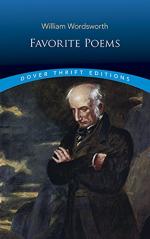
|
| Name: _________________________ | Period: ___________________ |
This test consists of 15 multiple choice questions and 5 short answer questions.
Multiple Choice Questions
1. In the lines "Perhaps the plaintive numbers flow / For old, unhappy, far-off things," what does "plaintive numbers" refer to (lines 18-19)?
(a) Time and history.
(b) The reaper's personal experience.
(c) The reaper's tears.
(d) The song.
2. In which stanza does the speaker make it clear that this event happened some time in the past?
(a) The fourth.
(b) The first.
(c) The second.
(d) The third.
3. What is the meaning of the word "Yon" in line 2, "Yon solitary Highland Lass"?
(a) Over there, that one.
(b) Nearby, this one.
(c) My.
(d) You.
4. In the fourth stanza, when the speaker finally places himself in the scene, what is it clear he is there to do?
(a) He is there to confess his love for the woman.
(b) He is out walking.
(c) He is delivering supplies.
(d) He is working on a farm.
5. What is the stanzaic form of "The Solitary Reaper"?
(a) Ballade.
(b) Octave.
(c) Octet.
(d) Ottava rima.
6. What technique is used in the line "A voice so thrilling ne'er was heard" (line 13)?
(a) Paradox.
(b) Verbal irony.
(c) Contraction.
(d) Litotes.
7. Where are "the farthest Hebrides" (line 16)?
(a) Scotland.
(b) Chile.
(c) Australia.
(d) Russia.
8. The characterization of the woman as a "Highland Lass" indicates that she is a young woman from what area?
(a) Scotland.
(b) Wales.
(c) Ireland.
(d) The Hebrides.
9. Besides that the reaper may be singing about some terrible moment in history, what else does the speaker guess she might be singing about?
(a) Love and romance.
(b) Ordinary, everyday troubles.
(c) Modern political events.
(d) The beauty of the Highlands.
10. What technique is evident in the line "Breaking the silence of the seas" (line 15)?
(a) Synesthesia.
(b) Sibilance.
(c) Onomatopoeia.
(d) Aphorismus.
11. Which of the following most clearly communicates the speaker's admiration for the reaper's singing ability?
(a) The metaphors in the second stanza.
(b) The repeated use of exclamation points.
(c) The poem's elevated diction.
(d) The poem's nature imagery.
12. How does line 3, "Reaping and singing by herself," interrupt the poem's dominant metrical pattern?
(a) It ends with a spondee.
(b) It begins with a spondee.
(c) It ends with a trochee.
(d) It begins with a trochee.
13. What technique is used in phrases like "the Vale profound" (line 7) and "A voice so thrilling ne'er was heard" (line 13)?
(a) Inversion.
(b) Imagery.
(c) Simile.
(d) Symbolism.
14. Which is the best interpretation of line 6's reference to "a melancholy strain"?
(a) Hard work.
(b) Persistent pain.
(c) A sad song.
(d) A difficult burden.
15. Where in the Highlands is the field where the woman is standing?
(a) By a river in the foothills.
(b) In a valley.
(c) On the hillside.
(d) At the top of a mountain.
Short Answer Questions
1. In the second stanza, to whom is the nightingale depicted singing?
2. What is the young woman doing in the field?
3. What technique is employed in lines 7 and 8, "O listen! for the Vale profound / Is overflowing with the sound"?
4. Which line uses deliberate redundancy for emphasis?
5. What is subtly appropriate about the meter in lines 25 and 26, "Whate'er the theme, the Maiden sang / As if her song could have no ending"?
|
This section contains 590 words (approx. 2 pages at 300 words per page) |

|




